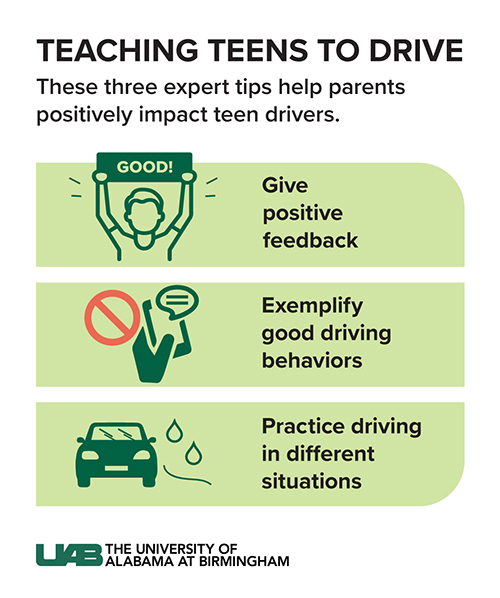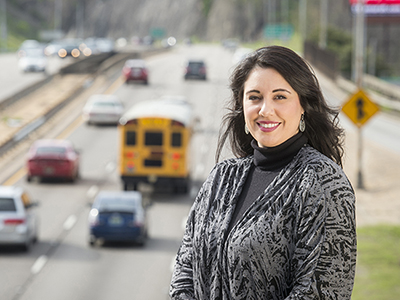 Getting a driver’s license is a huge milestone in a teenager’s life, but for parents, it is often — understandably — a time of fear and stress.
Getting a driver’s license is a huge milestone in a teenager’s life, but for parents, it is often — understandably — a time of fear and stress.
According to the Centers for Disease Control and Prevention, six teens ages 16 to 19 are killed in a motor vehicle crash every day. The Insurance Institute for Highway Safety says that maturity and lack of experience elevate the crash rate among teenage drivers. A parent’s supervision and instruction in the first years of driving are crucial to the advancement of their child’s driving abilities, according to Despina Stavrinos, Ph.D., associate professor in the University of Alabama at Birmingham Department of Psychology and director of the UAB Translational Research for Injury Prevention.
Stavrinos suggests three things parents can do to positively impact their teenage drivers.
Give feedback
The most critical period for teen drivers is in the first few months of independent driving. That is when their crash rates are the highest. Providing direction to teenagers is imperative before they earn their license, but continuing to give corrections after they are licensed is vital to the improvement of their skills.
“Simply taking and passing a driving test is not enough. Newly driving teens need constant and consistent feedback about their driving,” Stavrinos said. “Parents play an integral role in their learning-to-drive period. This is the time when teens learn the skills necessary to be well-equipped for whatever situations they may face out on the road.”
Giving feedback consistently is important, but how parents approach driving instruction can be just as important.
“Remain calm, because teens are more open and receptive to feedback that way,” Stavrinos said. “When talking, parents should emphasize that their utmost concern is keeping their teens safe.”
To navigate the conversation, parents and teens can create driving rules together. Driving agreements can help involve your teen, and give them more control and ownership. They also could make them more responsive and open to your feedback.
Set the example
Just as when they were younger, teenagers will watch and copy everything you do. You need to be aware of how well you are driving in front of your children, even from an early age.
“Once children are in forward-facing car seats, they can actually see the driver and begin to learn about what is appropriate behind the wheel,” Stavrinos said. “So, it is essential that parents model good driving behaviors early on.”
Some key examples include:
- Always wear a seatbelt
- Never drive impaired
- Stay off cellphones while driving
In a recent study, Stavrinos found that conversation through a cellphone, whether texting or talking on the phone, impacted driving performance, which was most evident through variability in lane position, lane deviations and reaction time.
 Despina Stavrinos, Ph.D., director of the UAB Translational Research for Injury Prevention.Incorporate various driving conditions
Despina Stavrinos, Ph.D., director of the UAB Translational Research for Injury Prevention.Incorporate various driving conditions
When first starting out, teach teens to drive during the day on residential streets to help minimize the stress and nerves of learning at the beginning. Once parents are confident in a teen’s driving skills, it is important to include practice sessions in more intense driving circumstances.
Stavrinos suggests providing teens opportunities to drive in a variety of conditions while under parental supervision. Optimal practice situations for teens include:
- Rain
- Fog
- At dusk or nighttime
- On interstates or rural roads
“Parents should encourage as much on-road driving experience with their teen drivers as possible,” Stavrinos said. “High-quality practice is essential, for example, with interstate driving. This is quite different from driving in residential areas, because there are different skills that must be mastered, such as merging into traffic and turning at intersections across oncoming traffic.”
The key is for parents to repeatedly expose their teens to different driving situations to ensure they are ready when they become independent drivers.